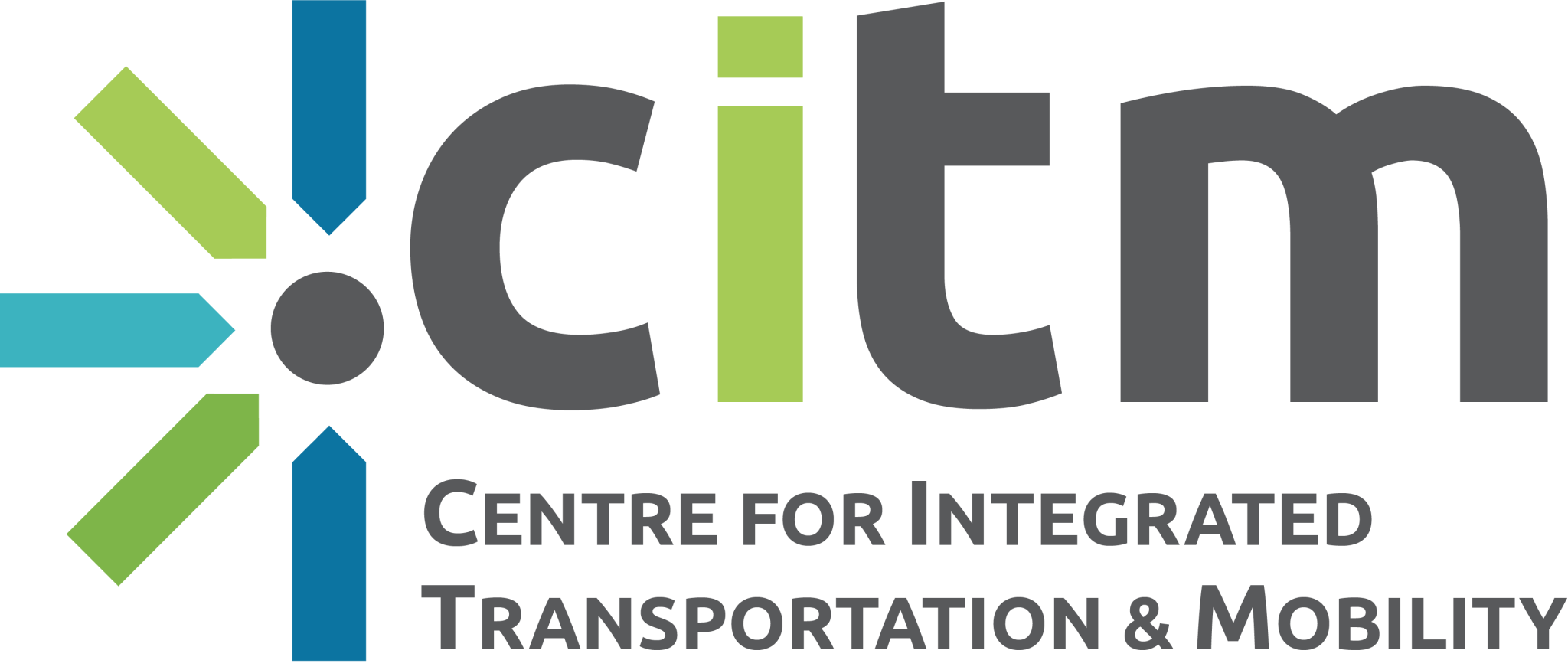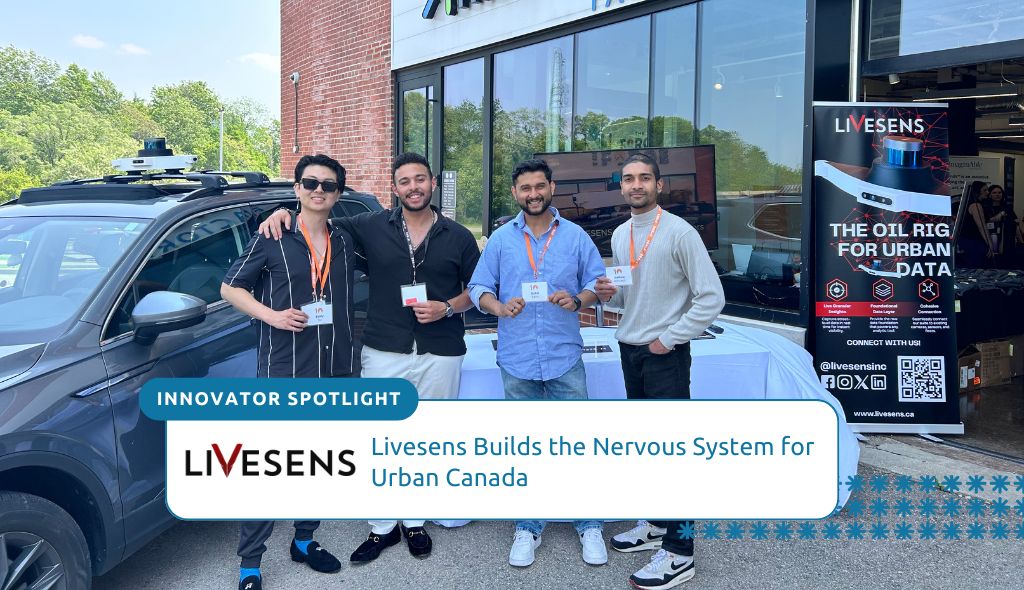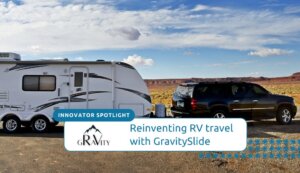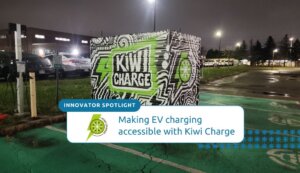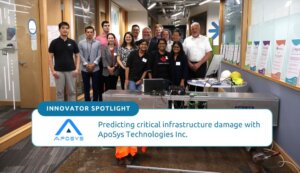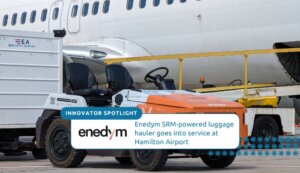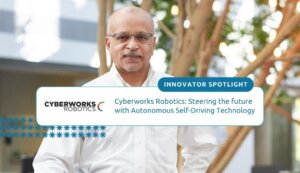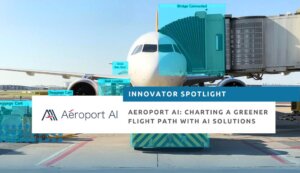This article was written by Yugbodh Singh for Tech Beat Canada on June 18, 2025. Read the original article here.
In the heart of Canada’s smart-city evolution, Burlington‑based startup LiveSens is transforming everyday vehicles into real‑time data hubs. Born at McMaster University, their modular sensor suites – unobtrusively mounted on fleet and transit vehicles – capture environmental metrics, traffic patterns and foot‑traffic insights, streaming them live to urban planners and decision‑makers. The result? Cities that don’t just move they learn, adapt and optimise in real time.
What was the specific moment or experience during your time at McMaster University that made you realize this was a problem worth solving, and how did three engineering students decide to tackle such a complex market challenge?
It started with a drive down the 403. We passed a massive digital billboard and asked ourselves: Who’s actually seeing this? Online, it’s easy; clicks, views, demographics. But in the physical world? It turns out Canada’s biggest ad networks were still relying on historic traffic models from years ago.
To three engineering students, that felt like a glitch in the matrix. We started building real-world visibility tools using sensors on mobile ad displays that could detect views and analyze audience patterns in real-time.
But when early investors told us, “This data is bigger than ads, this is the nervous system of cities,” we pivoted fast. What started as curiosity became conviction. Today, we’re using moving fleets to stream real-time insights across infrastructure, environment, and urban mobility. We didn’t just build a product, we launched a platform that lets cities finally see themselves, live.
Can you break down the core technology behind your platform? What makes your approach different from existing data collection solutions, and how do you ensure data accuracy while maintaining the mobility and cost-effectiveness you advertise?
Livesens rigs ordinary vehicles whether transit, fleet, or maintenance with smart edge units that capture and process rich urban data as they move. Think of them like roaming satellites for the street. What sets us apart isn’t just mobility — it’s intelligence at the edge and scale at the core.
Unlike fixed infrastructure or drone flyovers, we get hyper-local, hyper-frequent, and cost-efficient coverage using assets cities already own. Our backend fuses multi-sensor inputs in real time, filters noise, and streams structured insights directly to city dashboards and APIs. No waiting for reports. No black box analytics. Just visibility you can act on now.
With increasing concerns about data privacy and surveillance, especially in public spaces, how does LiveSens address privacy compliance? What safeguards have you built into your platform to ensure organizations can gather actionable insights while respecting individual privacy rights?
We built Livesens around the principle of visibility without surveillance. There’s no facial recognition, no biometric profiling, ever. Thanks to a grant from OVIN and a partnership with Communitech, we developed on-device privacy algorithms that redact faces and plates in real time, before anything hits the cloud. Our system sees patterns, not people. We also work closely with academic ethics boards and municipal legal teams to ensure regional compliance and transparent data governance. Our mission is to make cities smarter, not creepier.
Can you share some specific use cases where LiveSens has already made an impact? What types of organizations are your early adopters, and what kind of ROI or operational improvements are they seeing?
We’re in talks with McMaster University for campus wide deployment and the City of Hamilton to revitalize the downtown core. Upcoming pilots include the City of Vaughan and Markham via Ontario’s OVIN program.
These are real-world testbeds with real infrastructure impact:
- Hamilton is using us to detect potholes, burnt-out lighting, and urban decay downtown.
- Vaughan and Markham are tapping us for early fault detection in signage, pavement, and roadside assets.
- McMaster is using us to build a live digital twin of campus for risk prevention and smart maintenance.
We’re not theorizing. We’re operational and cities are lining up to join the network.
How do you see the company contributing to Canada’s position in the global IoT and smart city technology landscape, and what advice would you give to other university-based tech startups looking to commercialize their innovations?
Canada has the talent and infrastructure to lead the next wave of urban tech and we just need to connect the dots. Livesens is creating that connective tissue. We’re turning fleets into flying sensors, and cities into data-aware systems. To fellow student founders: don’t wait for perfect conditions. Launch ugly. Launch early. But solve a problem that actually keeps you up at night. Every investor, city, and mentor we’ve brought on came from us showing and not just telling what’s possible.
